Cleaning Tiles - Everything you Need to Know
We must be cautious with the substances we use, as abrasive cleaners can damage grout and tile surfaces. Care is essential!

Dirty tiles are an eye-sore and a challenge to the proud homeowners we claim to be all the time. Cleaning grungy tiles is in no way an easy task unless you know how to do it. We have to be extremely careful about the substances we use to ensure that they don’t get damaged as abrasive cleaners, in particular, can harm the grout and tile surfaces.
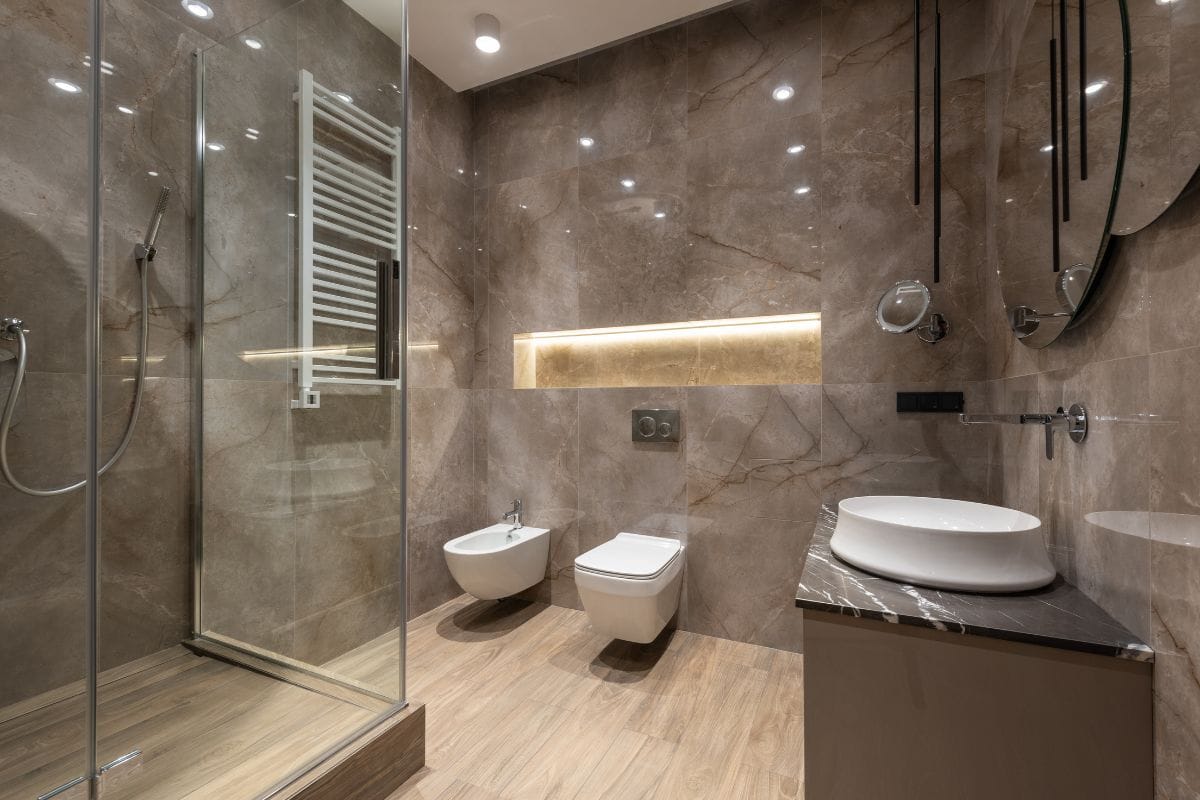
Different tiles made up of different materials need different methods of cleaning to get great, long-lasting results. So, we at HomeTriangle decided to give you some tips to keep the tiles in your bathroom and kitchen sparkling clean.
1.Ceramic Tiles
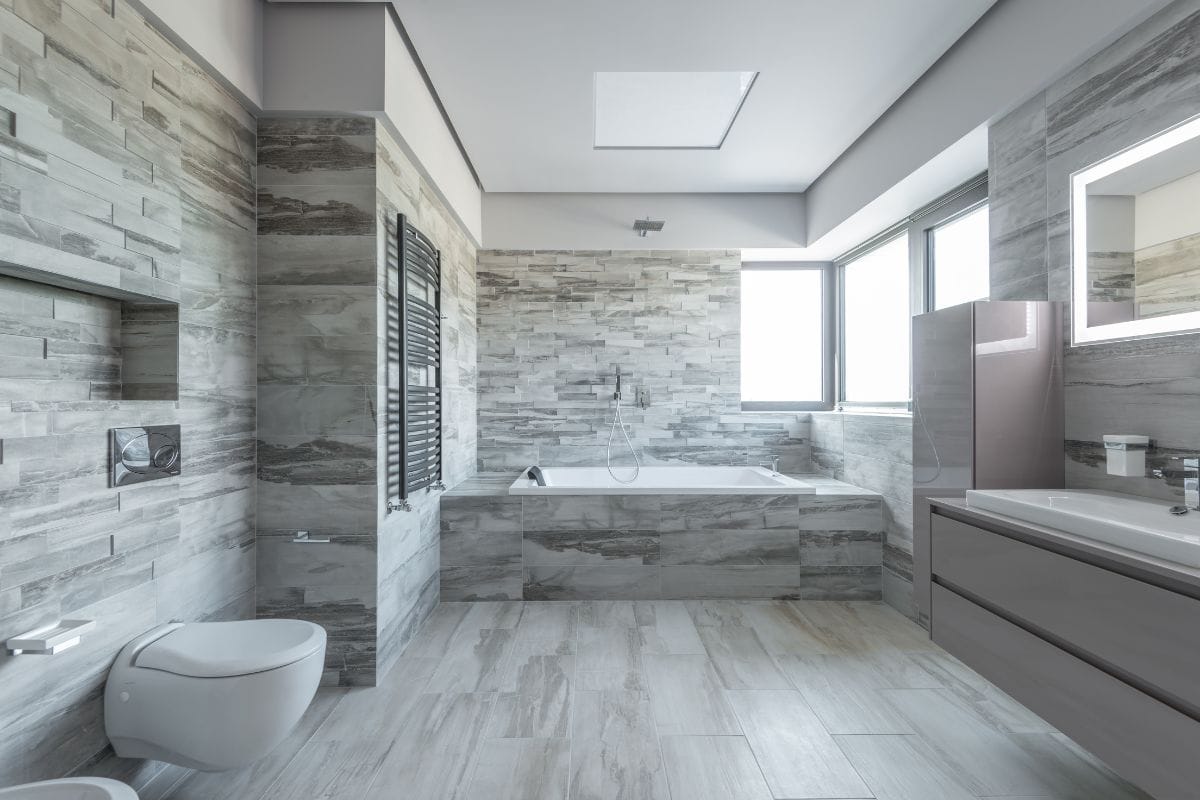
The key to keeping ceramic tiles clean and sparkling is regular maintenance. Wiping or vacuuming using a soft brush (to avoid scratches) at least twice a week and before you clean is necessary because they get dusty often. This will help in stopping debris from becoming embedded in the grout. Water can remove almost all the stain except the most stubborn ones. Use a gentle cleanser only if the manufacturer recommends it.
We suggest a 50/50 mixture of water and vinegar for a sparkling finish. Use a clean and fresh mop instead of a worn-out and dirty one to get the shine you want. A gentle scraper is advised only when removing anything the water cannot remove. Abrasive chemicals and detergents should be avoided at all costs as they can damage and discolor the grout over time.
2. Glass Tiles
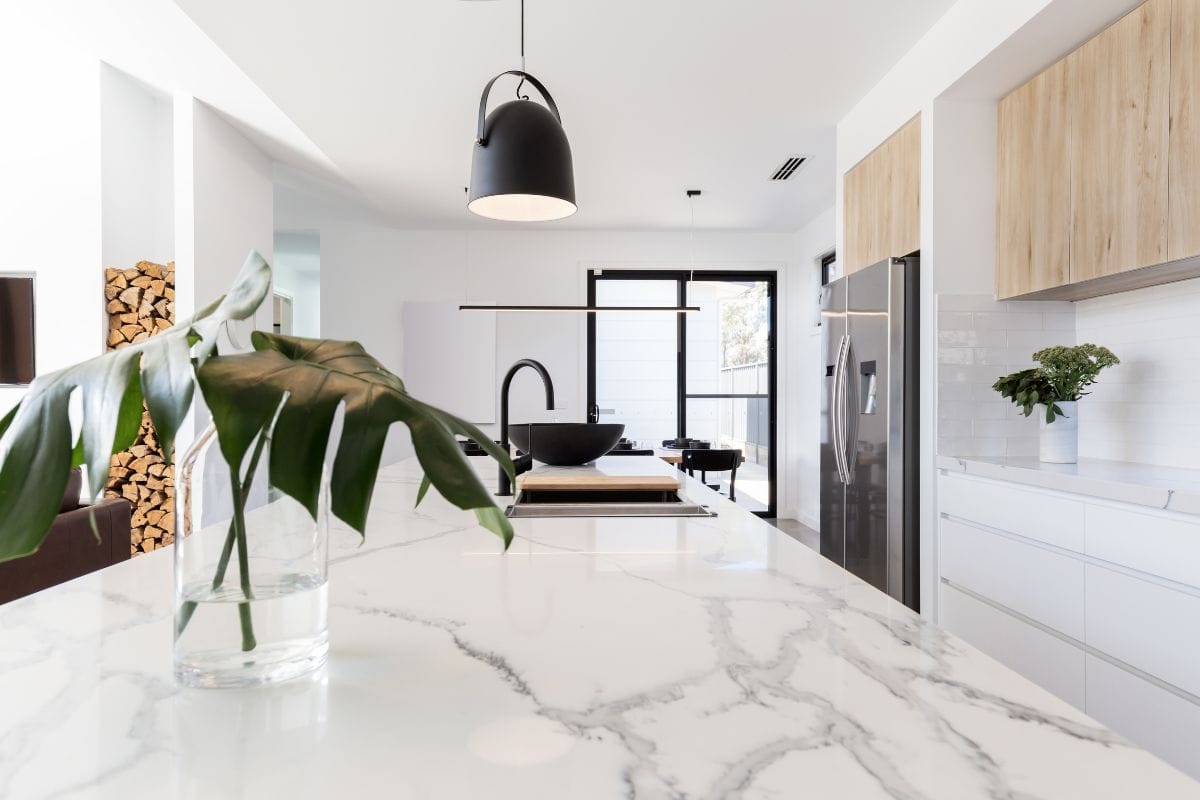
We absolutely love glass tiles. They look and feel gorgeous when they are sparkling clean but could end up looking dull and unappealing otherwise. An equal part solution of water and vinegar is the best way to remove things like soap scum and other residues from a glass tile surface. Add the mixture to a spray bottle and apply it to the step tiles and let it rest for about 10 minutes before cleaning the surface with a soft brush.
Sweeping the glass floor tiles every day will remove the hard particles that might damage the tiles otherwise. Be careful not to use hard brushes that can scratch the surface.
3. Natural Stone and Marbles

A mild detergent in warm water is only needed to clean the surface of marble, granite, and other natural stone tiles. Using soft cloth or mop is better to avoid scratching the surface before rinsing with cold water to remove any soap residue. Buffing the tiles with a microfibre cloth can give a nice shine to the tiles.
Off-the-shelf cleaners, acidic or alkaline products, ceramic tile cleaners, and rough cloths or brushes should be absolutely avoided when cleaning natural stone tiles as these can damage the surface of the tiles.
4. Vitrified or Porcelain Tiles
The easiest tiles to clean are porcelain tiles. All you have to do is sweep it every couple of days with a soft broom or brush, vacuum once a week with the brush attachment to remove most of the dust settles on it. Wash it with a solution of water and dishwashing detergent once a month before mopping with water and a little vinegar for a brilliant finish.

Vitrified tiles are a kind of ceramic tile. The clay mixed along with silica, quartz, and feldspar is melted by heating them at extremely high temperatures to form a glass-like texture throughout the tile. Vitrified tiles have a glossy finish and are non-porous and stronger than regular ceramic tiles. You can apply the same cleaning methods as with porcelain tiles while cleaning vitrified tiles. Cleaning up spills as soon as they happen will help to increase their lifetime. Our advice is to ensure that the spills don’t dry on the surface of the tiles as they may cause a stain.
5. Metal
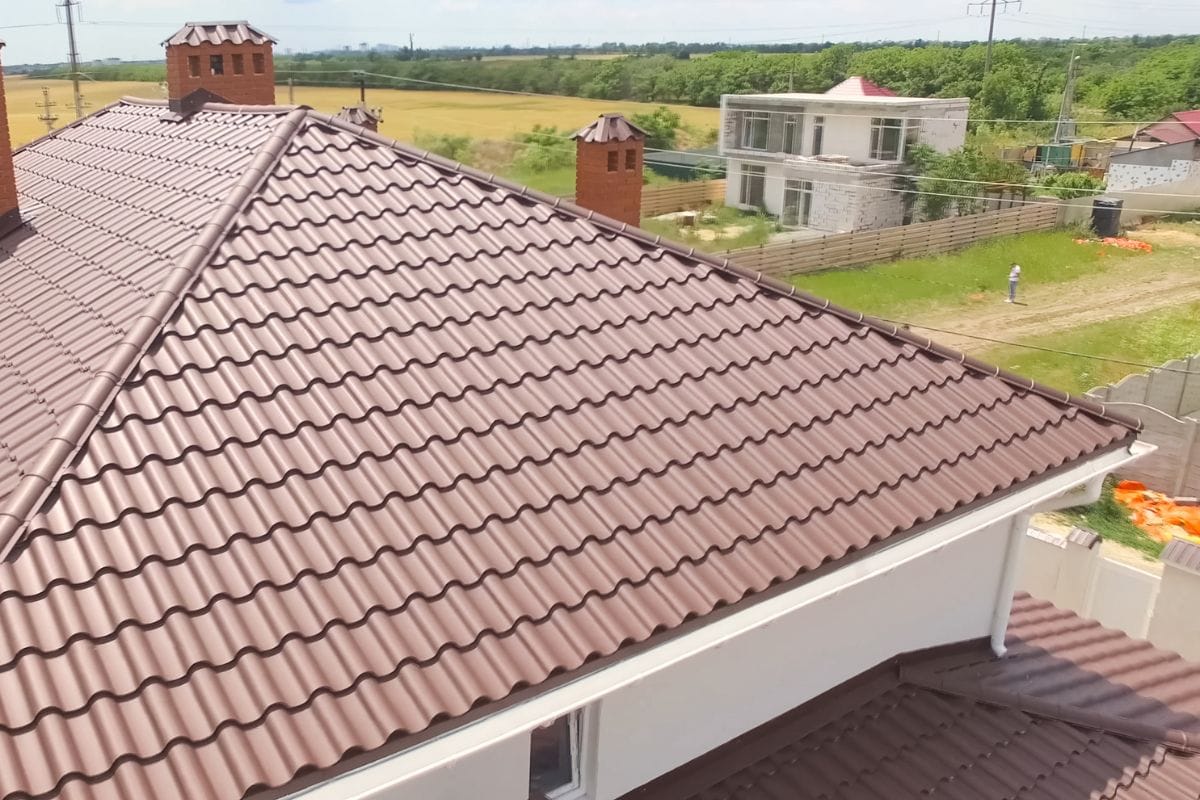
Clean most metal tiles using a mixture of mild detergent and water, except stainless steel, copper, and titanium. Use a microfiber cloth and rinse afterward to make sure there are no streak marks. Use the specific cleaners made for them while cleaning stainless steel, copper, or titanium tiles.Be careful not to use abrasive cleaners, scouring pads, steel wool, ammonia, or bleach when cleaning these types of surfaces.
6. Slate
The reason we love slate tiles is because of their uneven surfaces and that is what makes cleaning them so much difficult. The rustic charm they add to any surface gives off an earthy feel to any room.
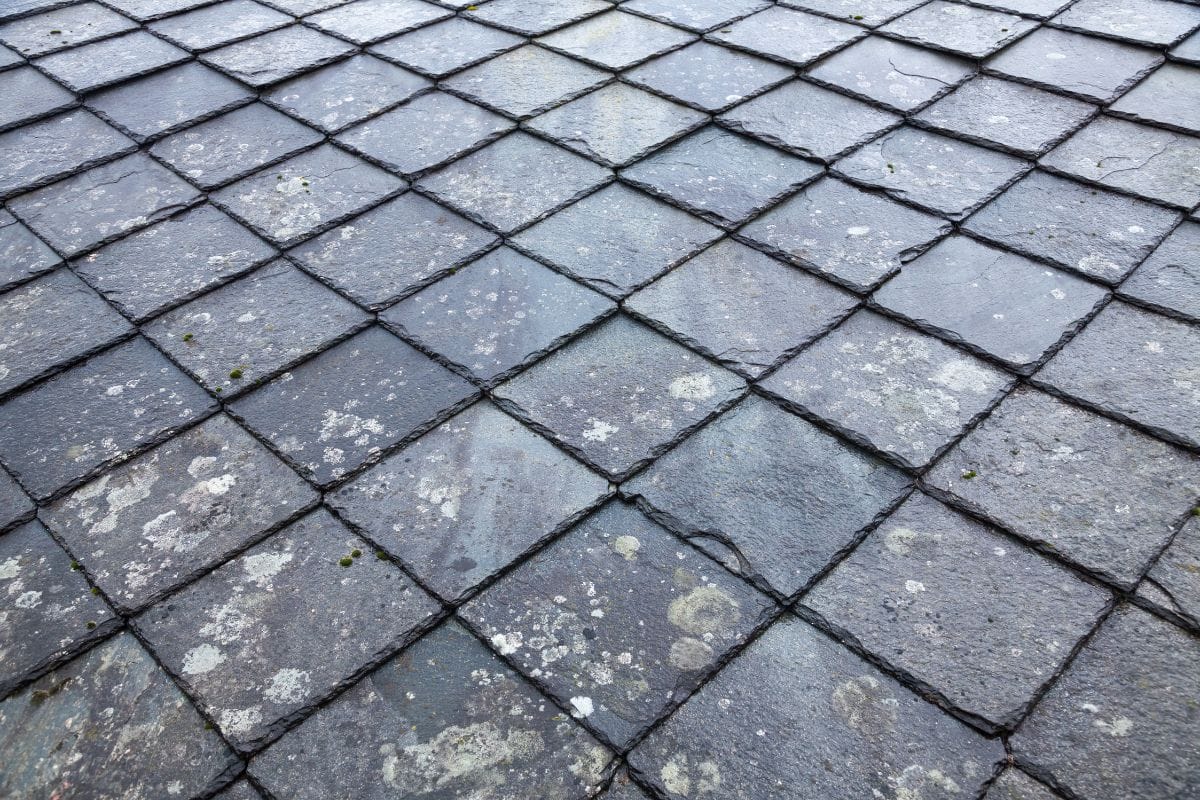
Regularly sweep with a soft broom or brush to avoid any build-up of dust or dirt. Use only a soft cloth or non-oil based mop. Rinse the surface only if any soap residue can be found. Air-dry the area otherwise.

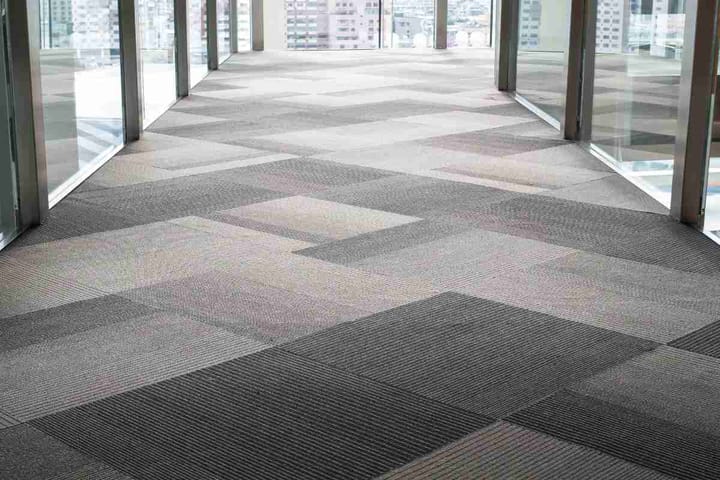
Comments ()